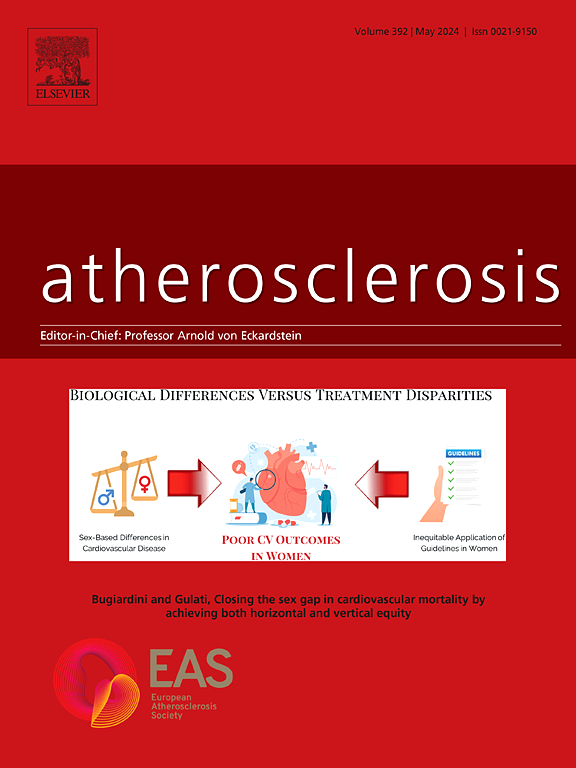Mid-life physical activity and calcification of coronary arteries, aorta, and cardiac valves in late life: The Atherosclerosis Risk in Communities (ARIC) study
IF 4.9
2区 医学
Q1 CARDIAC & CARDIOVASCULAR SYSTEMS
引用次数: 0
Abstract
Background and aims
The association of physical activity (PA) with coronary artery calcification (CAC), one of the strongest predictors of cardiovascular disease, is unclear. Moreover, different domains of PA (e.g., exercise/sports vs. work) and extra-coronary calcification (ECC) have not been extensively studied. We comprehensively evaluated the association of PA with CAC and ECC.
Methods
We investigated 2025 ARIC participants (age 73–95 years) without coronary heart disease at visit 7 (2018–19). Mid-life total and domain-specific (sport, leisure, and work) PA scores were estimated using a modified Baecke questionnaire. We modeled the averaged PA scores at visit 1 (1987–89; age 44–65 years) and visit 3 (1993–95; age 49–70 years). We explored continuous CAC and ECC (log-transformed [Agatston score+1]) or the presence of any CAC and ECC (Agatston score >0 vs. 0) as dependent variables using multivariable linear regression and logistic regression models, as appropriate.
Results
Total PA scores showed a U-shaped association with both continuous and any vs. no CAC. Higher total PA scores were associated inversely with ECC and most pronounced for the descending aorta calcification. The associations were generally consistent across demographic subgroups. When specific PA domains were examined, higher sport and work PA scores were significantly associated with lower descending aorta calcification.
Conclusions
Mid-life PA showed a U-shaped association with late-life CAC. Among ECC, the association of higher PA with lower calcification of the descending aorta was the most consistent. Our results further corroborate a complex interplay between PA and vascular health and unique pathological processes across different vascular beds.

求助全文
约1分钟内获得全文
求助全文
来源期刊

Atherosclerosis
医学-外周血管病
CiteScore
9.80
自引率
3.80%
发文量
1269
审稿时长
36 days
期刊介绍:
Atherosclerosis has an open access mirror journal Atherosclerosis: X, sharing the same aims and scope, editorial team, submission system and rigorous peer review.
Atherosclerosis brings together, from all sources, papers concerned with investigation on atherosclerosis, its risk factors and clinical manifestations. Atherosclerosis covers basic and translational, clinical and population research approaches to arterial and vascular biology and disease, as well as their risk factors including: disturbances of lipid and lipoprotein metabolism, diabetes and hypertension, thrombosis, and inflammation. The Editors are interested in original or review papers dealing with the pathogenesis, environmental, genetic and epigenetic basis, diagnosis or treatment of atherosclerosis and related diseases as well as their risk factors.
 求助内容:
求助内容: 应助结果提醒方式:
应助结果提醒方式:


